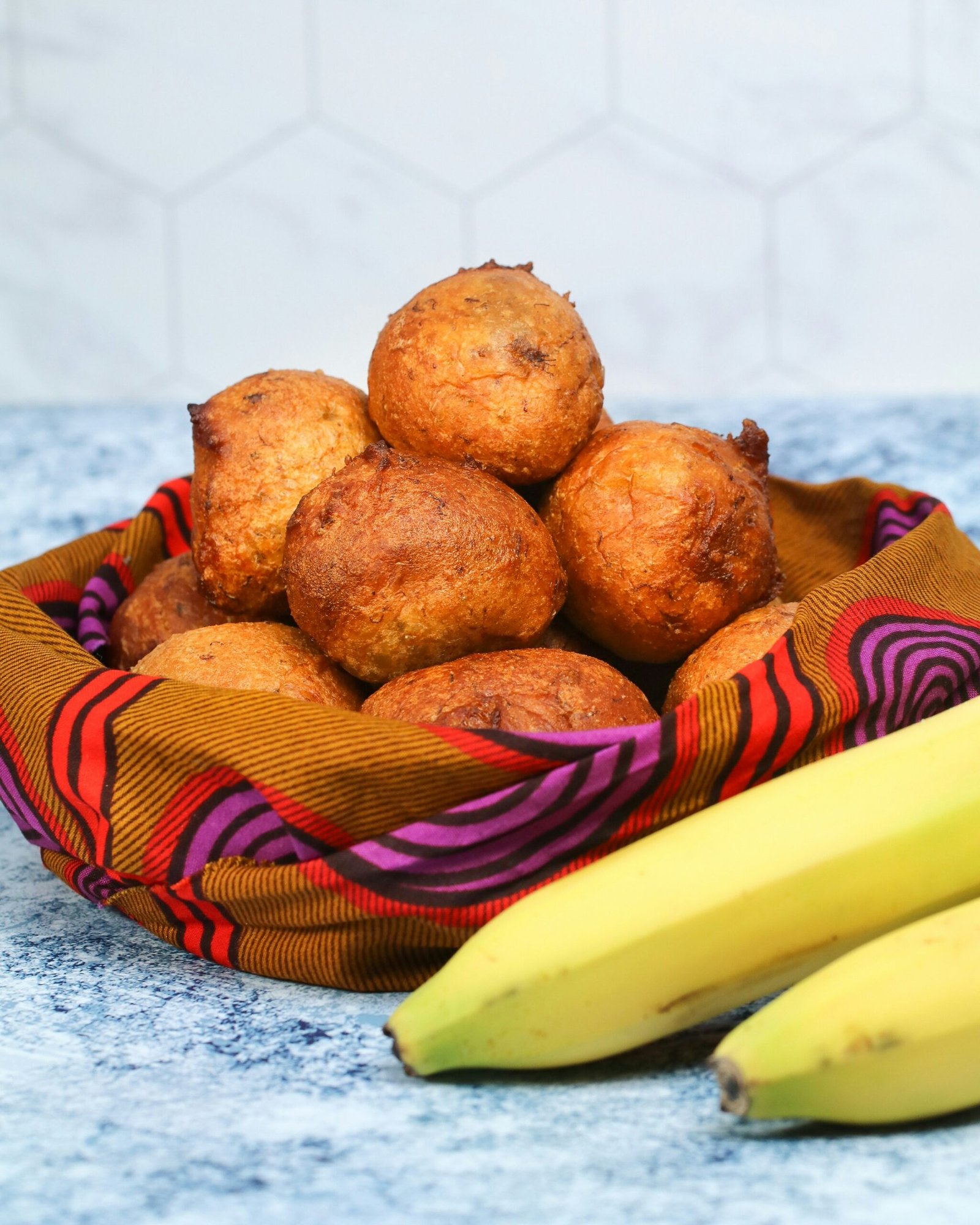Introduction to Yoruba Puff Puff
Yoruba Puff Puff is a delightful and popular snack deeply rooted in Yoruba cuisine, renowned for its cultural significance and widespread appeal. Originating from the Yoruba people of Nigeria, Puff Puff has transcended its regional origins to become a beloved treat enjoyed both locally and globally. Traditionally, it is served during various celebratory occasions such as weddings, birthdays, and festivals, signifying joy and festivity.
The origins of Yoruba Puff Puff date back centuries, embedded in the rich culinary heritage of the Yoruba people. It is a testament to the creativity and resourcefulness of the Yoruba community, making use of simple ingredients to create something truly special. Over time, this delectable snack has spread beyond the boundaries of Nigeria, capturing the hearts of food enthusiasts around the world.
One of the key characteristics of Yoruba Puff Puff is its distinctive round shape, achieved by carefully dropping small portions of the dough into hot oil. The result is a perfectly spherical, golden-brown snack that is not only visually appealing but also irresistibly delicious. The fluffy texture of Puff Puff is another hallmark, providing a light and airy bite that complements its sweet taste wonderfully.
The sweet flavor of Yoruba Puff Puff is achieved through a delicate balance of ingredients, typically including flour, sugar, yeast, and water. This combination ensures a subtly sweet taste that is not overpowering, making it an ideal snack for various palates. The versatility of Puff Puff also allows for variations in flavor, with some recipes incorporating spices or fruit to add a unique twist.
In conclusion, Yoruba Puff Puff is more than just a snack; it is a cherished part of Yoruba culture and cuisine. Its simplicity, along with its delightful taste and texture, has made it a favorite not only in Nigeria but across the globe. Whether enjoyed at a festive gathering or as a casual treat, Yoruba Puff Puff continues to bring joy and satisfaction to all who savor it.
Ingredients Needed for Yoruba Puff Puff
Creating the perfect Yoruba Puff Puff begins with gathering the right ingredients. The basic ingredients required to make Yoruba Puff Puff include:
1. All-purpose flour: The primary component, providing the structure for the dough. You’ll need 2 cups of all-purpose flour.
2. Sugar: Essential for sweetness and also aids in yeast fermentation. Use 1/2 cup of granulated sugar.
3. Active dry yeast: This ingredient is crucial for leavening, giving the Puff Puff its characteristic airy and fluffy texture. You’ll need 2 teaspoons of active dry yeast.
4. Warm water: Used to activate the yeast and form the dough. Ensure that the water is warm, but not hot, to effectively activate the yeast. Approximately 1 cup of warm water is needed.
5. Salt: A pinch of salt, around 1/2 teaspoon, is essential to balance the sweetness and enhance the overall flavor.
Optional Ingredients:
1. Nutmeg: Adding 1/2 teaspoon of ground nutmeg can enhance the flavor profile, giving the Puff Puff a warm, slightly spicy undertone.
2. Vanilla extract: For a touch of aromatic sweetness, you can include 1 teaspoon of vanilla extract.
3. Eggs: Although not traditionally used, adding one beaten egg can provide extra richness and improve the texture.
Each ingredient plays a pivotal role in achieving the desired taste and texture of Yoruba Puff Puff. The flour forms the dough’s base, while sugar sweetens and feeds the yeast. The yeast is indispensable for leavening, ensuring the Puff Puff is light and airy. Warm water combines the dry ingredients and activates the yeast, while salt enhances the overall flavor. Optional flavorings like nutmeg and vanilla extract add depth to the taste, making each bite a delightful experience.
Step-by-Step Preparation Guide
Creating the perfect Yoruba Puff Puff begins with an understanding of the ingredients and their roles. Start by gathering the following: flour, sugar, yeast, salt, water, and optionally, nutmeg for added flavor. Begin by proofing the yeast. In a small bowl, dissolve a teaspoon of sugar in warm water (approximately 110°F). Add the yeast and let it sit for about 5-10 minutes until it froths, ensuring that the yeast is active.
Next, in a large mixing bowl, combine the flour, the remaining sugar, and a pinch of salt. Pour in the frothy yeast mixture and additional water gradually, stirring continuously until a smooth, thick batter forms. If using nutmeg, now is the time to add it. The dough should be sticky and elastic but not overly runny. Cover the bowl with a clean kitchen towel or plastic wrap and place it in a warm area. Allow the dough to rise for about 1-2 hours or until it has doubled in size. This step is crucial for achieving the airy texture of Yoruba Puff Puff.
Once the dough has risen, heat oil in a deep frying pan or pot to around 350°F (175°C). To test the oil’s readiness, drop in a small piece of dough. If it sizzles and rises to the surface, the oil is ready. Using your hands or a spoon, scoop small portions of the dough and gently drop them into the hot oil. Fry the dough balls in batches to avoid overcrowding, which can lead to uneven cooking.
Fry the Puff Puff until they are golden brown, turning them occasionally for even cooking. Each batch should take about 3-5 minutes. Remove the Puff Puff with a slotted spoon and drain on paper towels to remove excess oil. Ensure they are cooked through by breaking one open; the inside should be light and fluffy, not doughy.
Achieving the perfect Yoruba Puff Puff involves patience and precision. From correctly proofing the yeast to monitoring the frying temperature, each step contributes to the final product’s quality. Avoid common pitfalls like undercooking by ensuring the oil is at the right temperature and not overcrowding the frying pan. With these guidelines, you can create delicious Yoruba Puff Puff that is crispy on the outside and soft on the inside.
Serving and Enjoying Your Puff Puff
Yoruba Puff Puff, with its golden-brown exterior and soft, fluffy interior, is a versatile snack that can be enjoyed in various ways. To truly elevate your Puff Puff experience, consider serving them with a selection of accompaniments. Dipping sauces such as chocolate, caramel, or even a tangy fruit coulis can complement the slightly sweet flavor of the Puff Puff. Additionally, beverages like zobo (hibiscus tea), ginger beer, or a chilled glass of lemonade can enhance the overall enjoyment.
When serving Puff Puff, presentation matters. Arrange them on a platter lined with parchment paper or a decorative napkin. For a more festive occasion, dust them lightly with powdered sugar or drizzle with honey. If you prefer a savory twist, you can sprinkle them with a pinch of cinnamon or nutmeg.
If you have leftover Puff Puff, keeping them fresh is essential. Store them in an airtight container at room temperature for up to two days. To retain their texture, place a piece of bread in the container to absorb any excess moisture. When you’re ready to enjoy them again, reheating is simple. Preheat your oven to 350°F (175°C) and place the Puff Puff on a baking sheet. Heat for about 5-7 minutes to restore their crispiness. Alternatively, you can use an air fryer at 350°F for 3-4 minutes.
For those looking to experiment, there are numerous creative variations of the traditional Puff Puff recipe. Incorporating fruit fillings such as diced apples or bananas can add a delightful surprise with each bite. You can also infuse the batter with spices like cardamom, ginger, or vanilla for a unique flavor profile. For a more indulgent version, try stuffing the Puff Puff with a small piece of chocolate or a dollop of jam before frying.
In summary, Yoruba Puff Puff is a delightful snack that can be enjoyed in multiple ways. With the right accompaniments, proper storage techniques, and a bit of creativity, you can make every Puff Puff experience a memorable one.















